Jacquemus Spring/Summer 2018
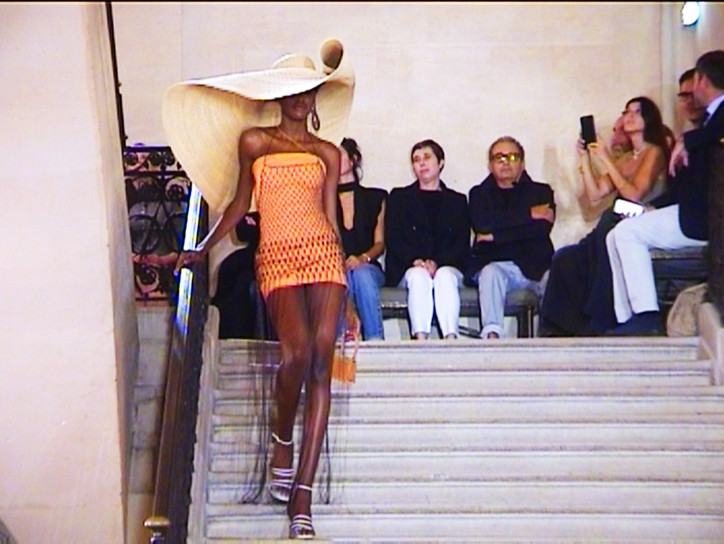
- “I don’t think I ever saw my mother more beautiful than on evenings after the beach and probably when she was in love” - Simon Porte Jacquemus
Stay informed on our latest news!

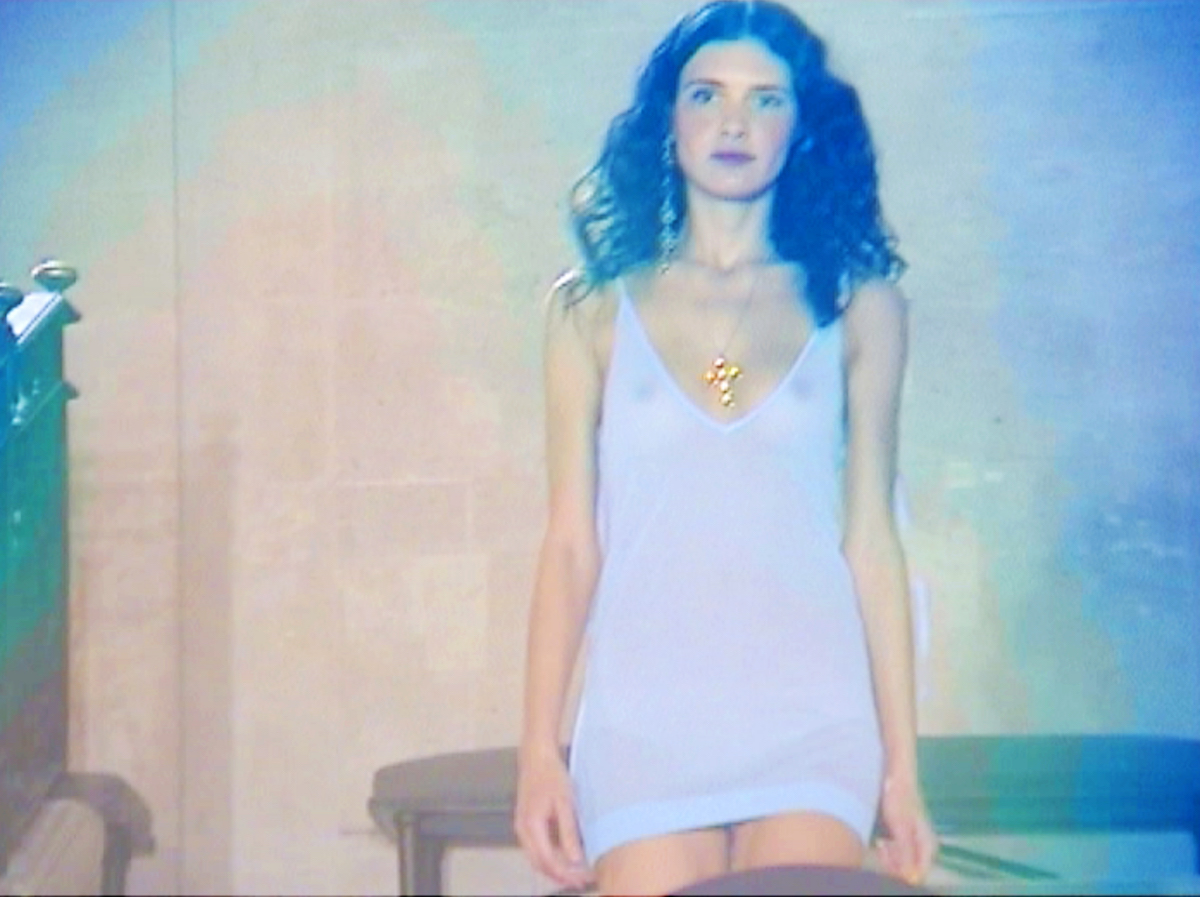
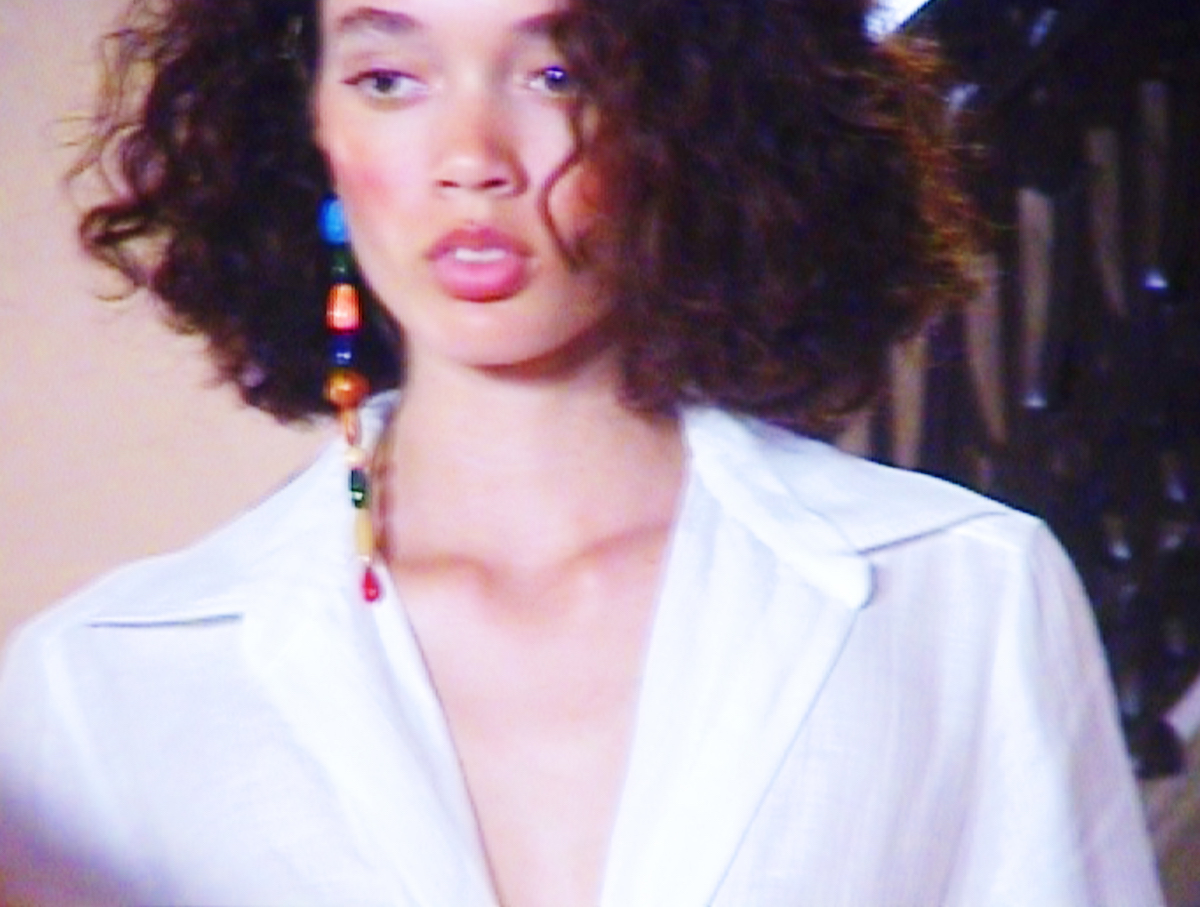

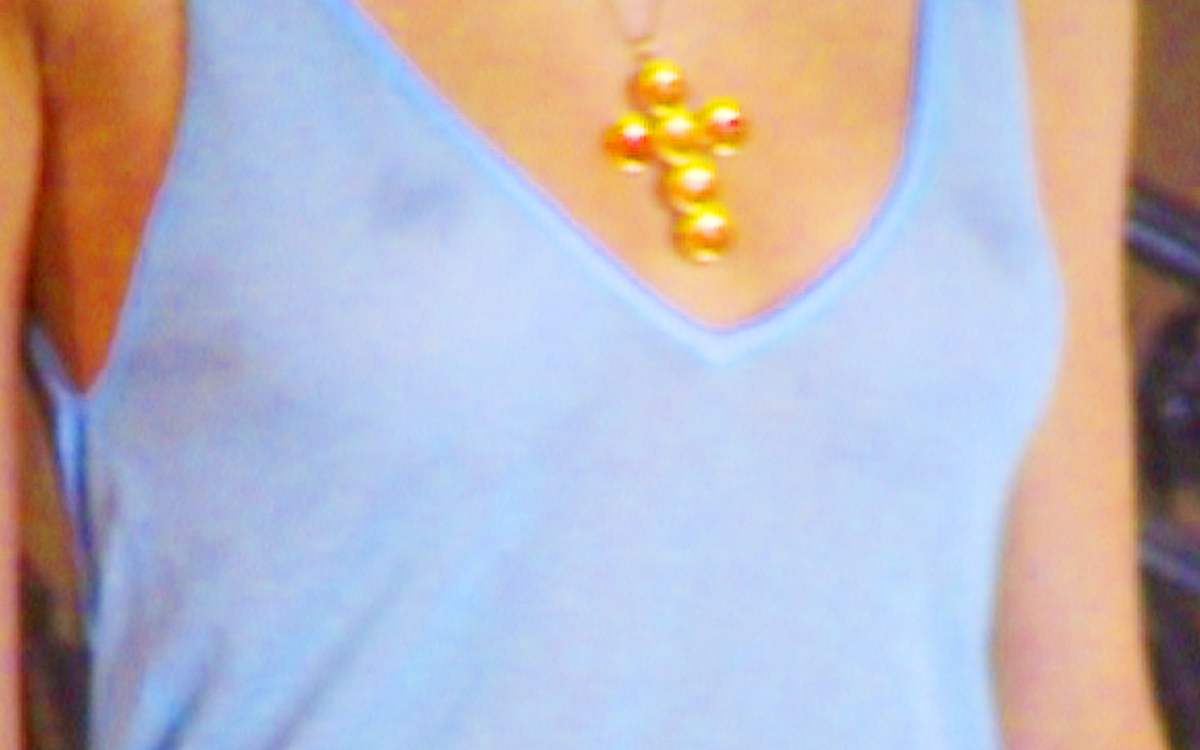
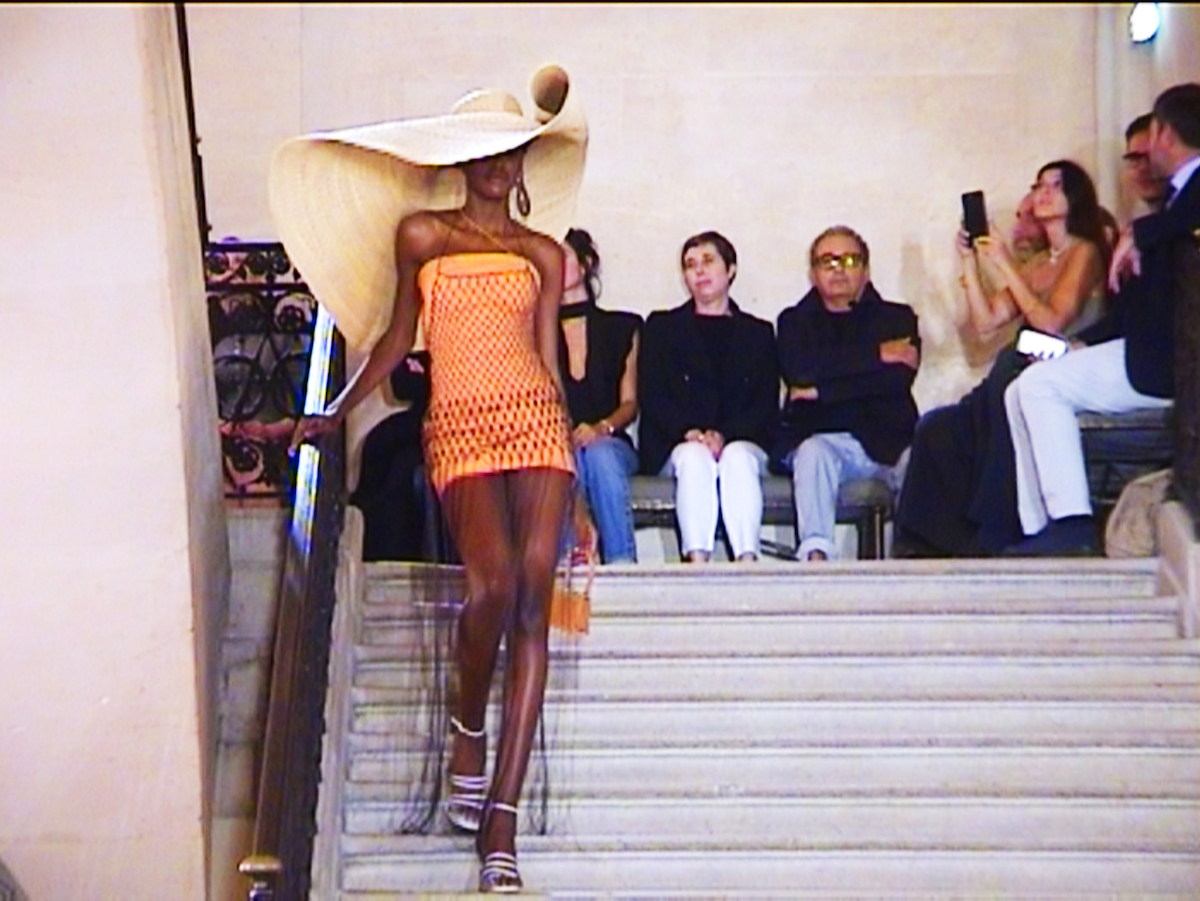

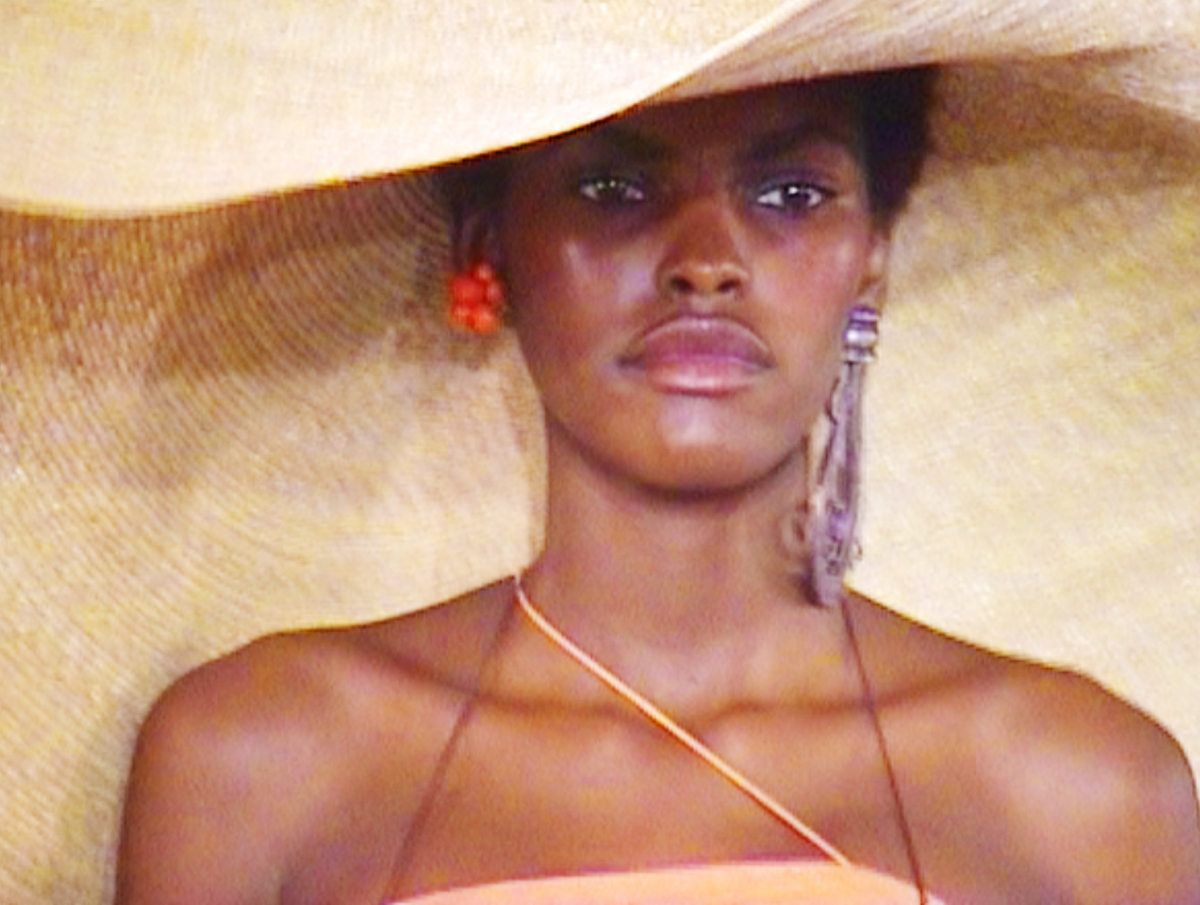
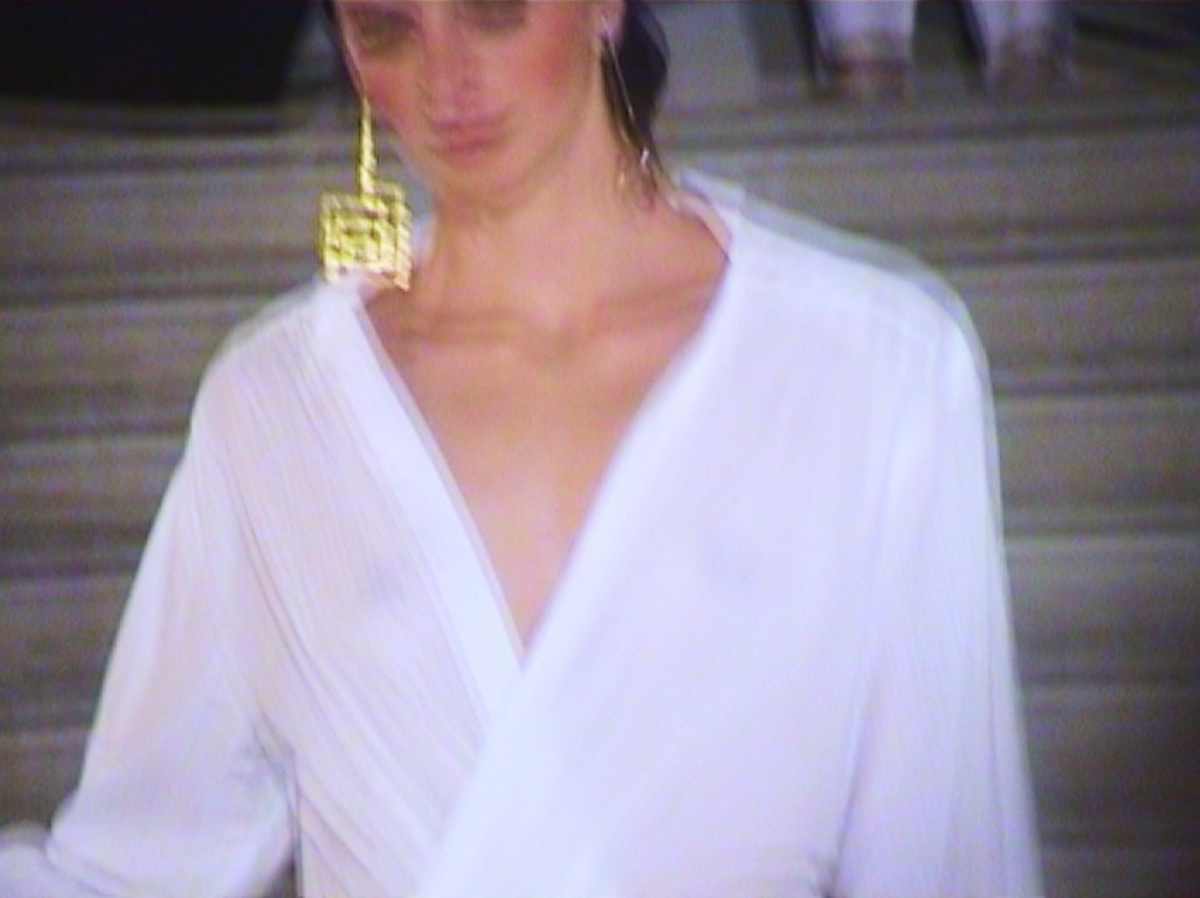

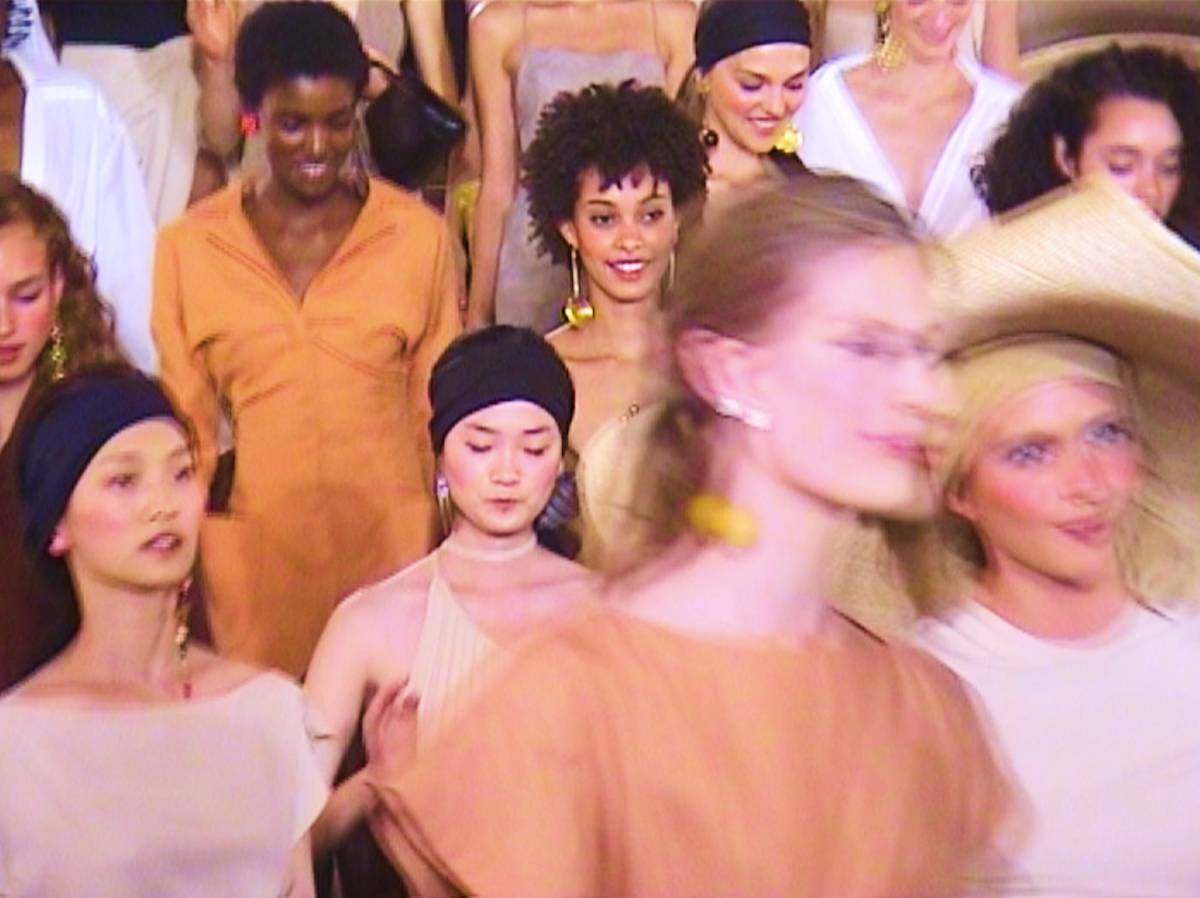
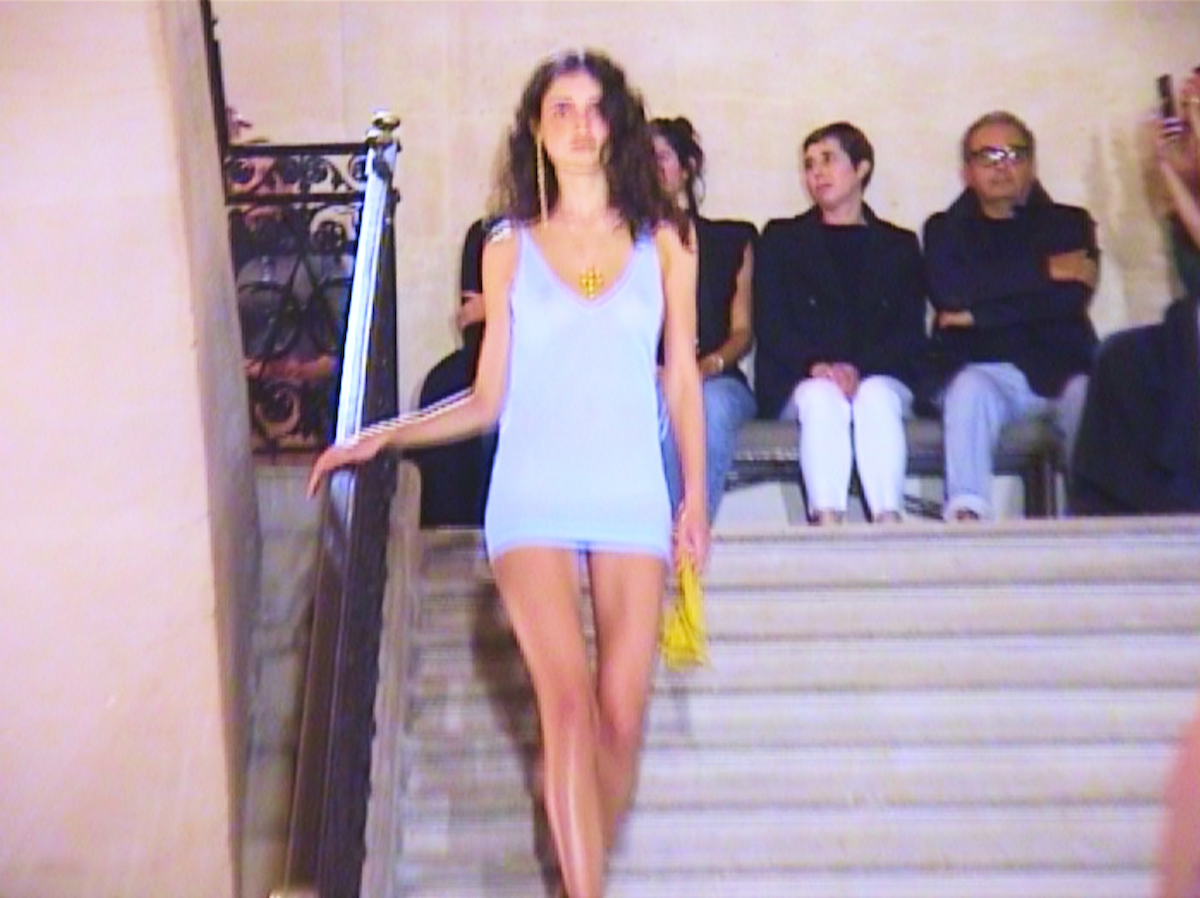

What is it about youth that obsesses us as a culture? What is it that's keeping casting directors and retailers from casting older models? Some say it's a question of attractiveness; sex does sell, after all. But here's the thing — you don't have to want to sleep with someone to acknowledge they exist. And maybe that gets to the politics of desirability and the social capital carried by the state of being wanted. But then, if modeling is about attraction and desire, that opens the fashion industry up to much more insidious critiques. Even with the gradual disappearance of literal children from the runway, what remains (aside from the legal questions surrounding child labor) are the ethical dilemmas, asking what it means to have a child as the face of a supposedly sexy brand. There are entire dissertations to be written about fashion’s obsession with assigning adult sexuality to an ostensibly young body. Nora Turriago writes it best in her 2016 HuffPost piece, explaining, “There is something distinctly unsettling about watching a pubescent girl stalk down the runway, styled to look beyond her years and wearing expensive clothing intended for children.”
With bows, colors, and volume, the post-COVID “dopamine dressing” of the past few seasons has been about healing our inner children. But perhaps there’s a way to do that without completely disregarding the inherent beauty of aging. What is more beautiful than a life well-lived? Working in the fashion industry, I’ve seen some of the most beautiful models get chewed up and spit out by legacy agencies the minute they stop looking like how they did in middle school. My mom always told me the world doesn’t end after high school. She was right. And fashion doesn’t end when you turn forty, or at least, it shouldn’t.
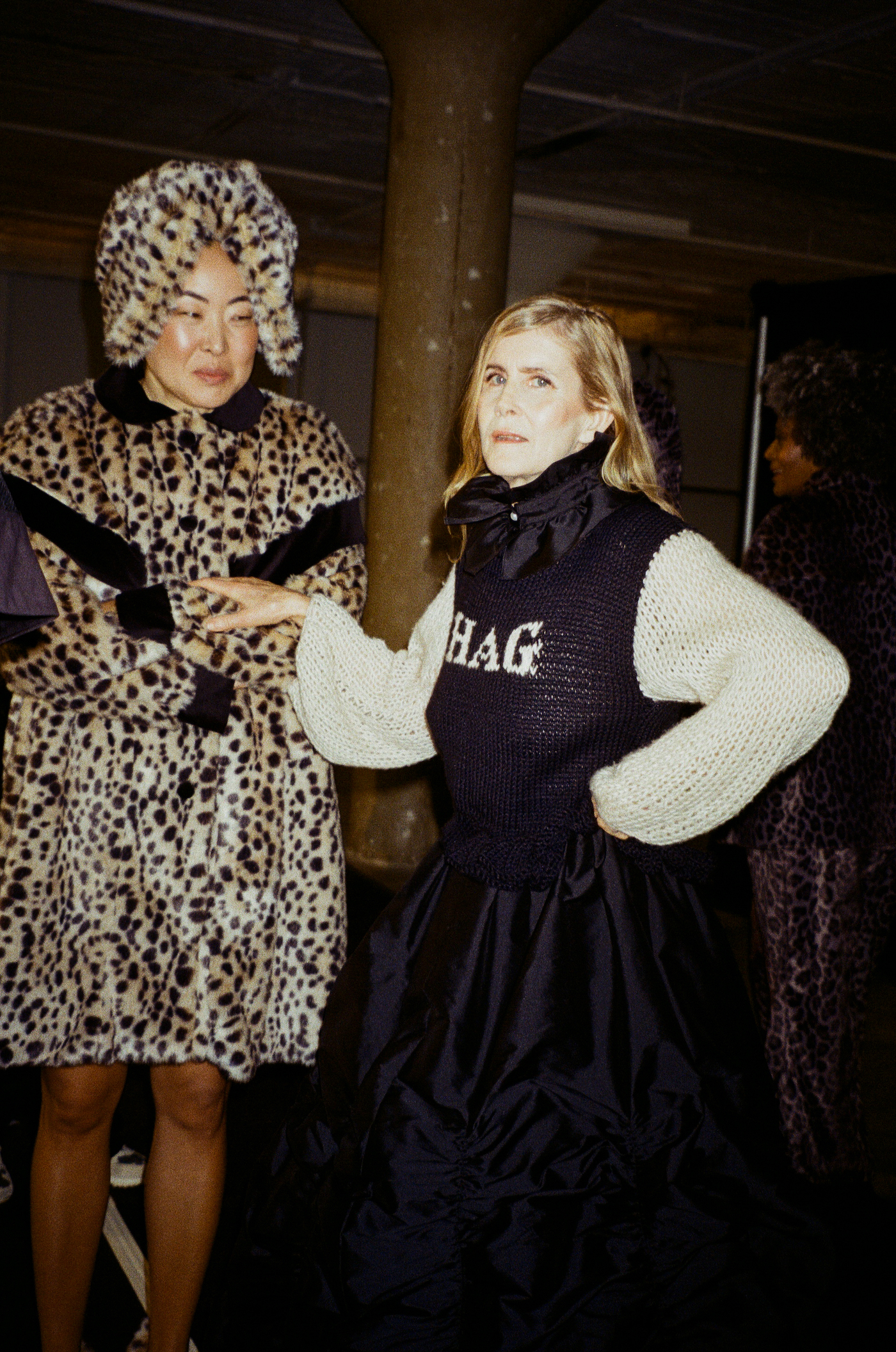
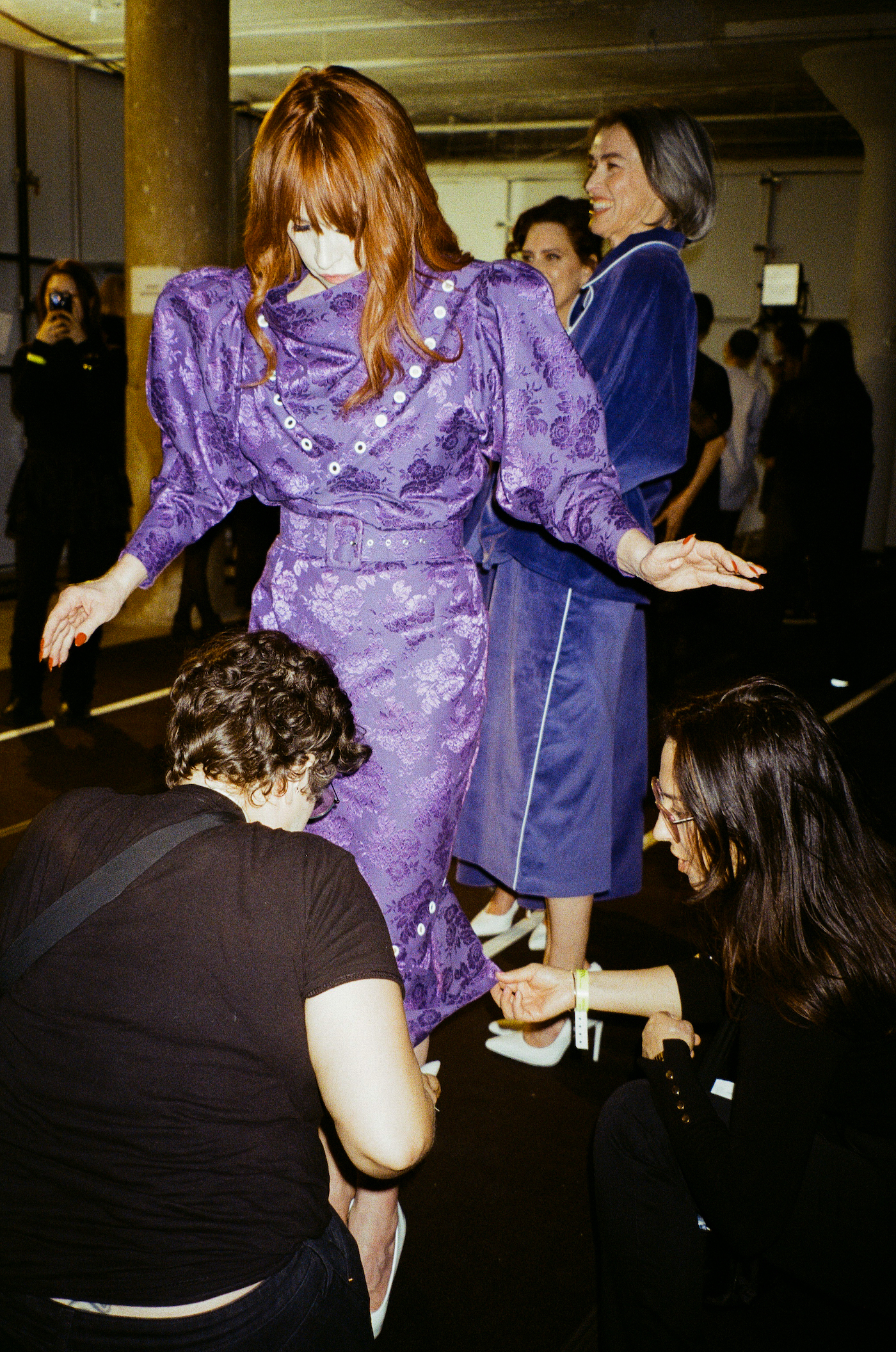
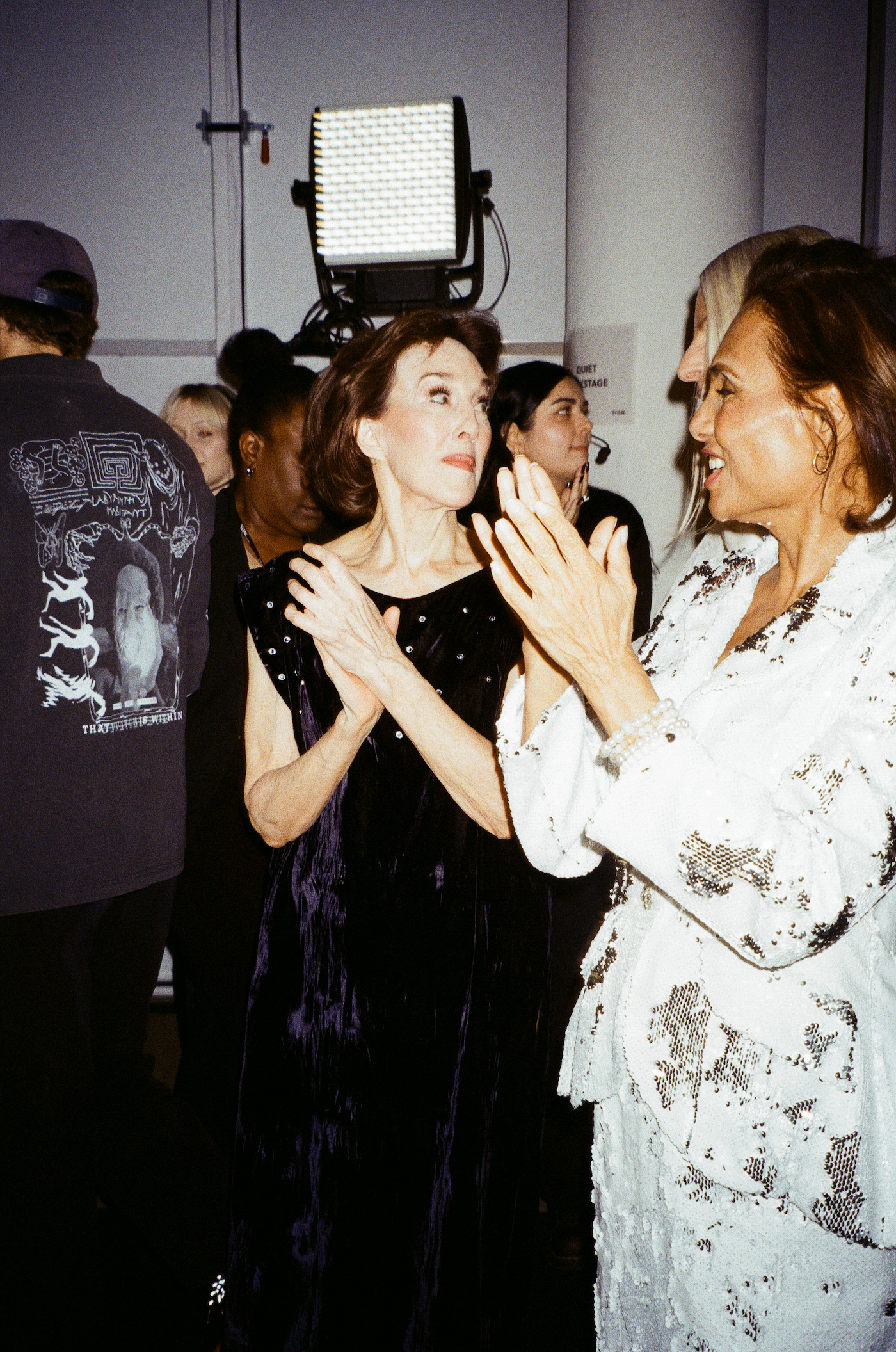
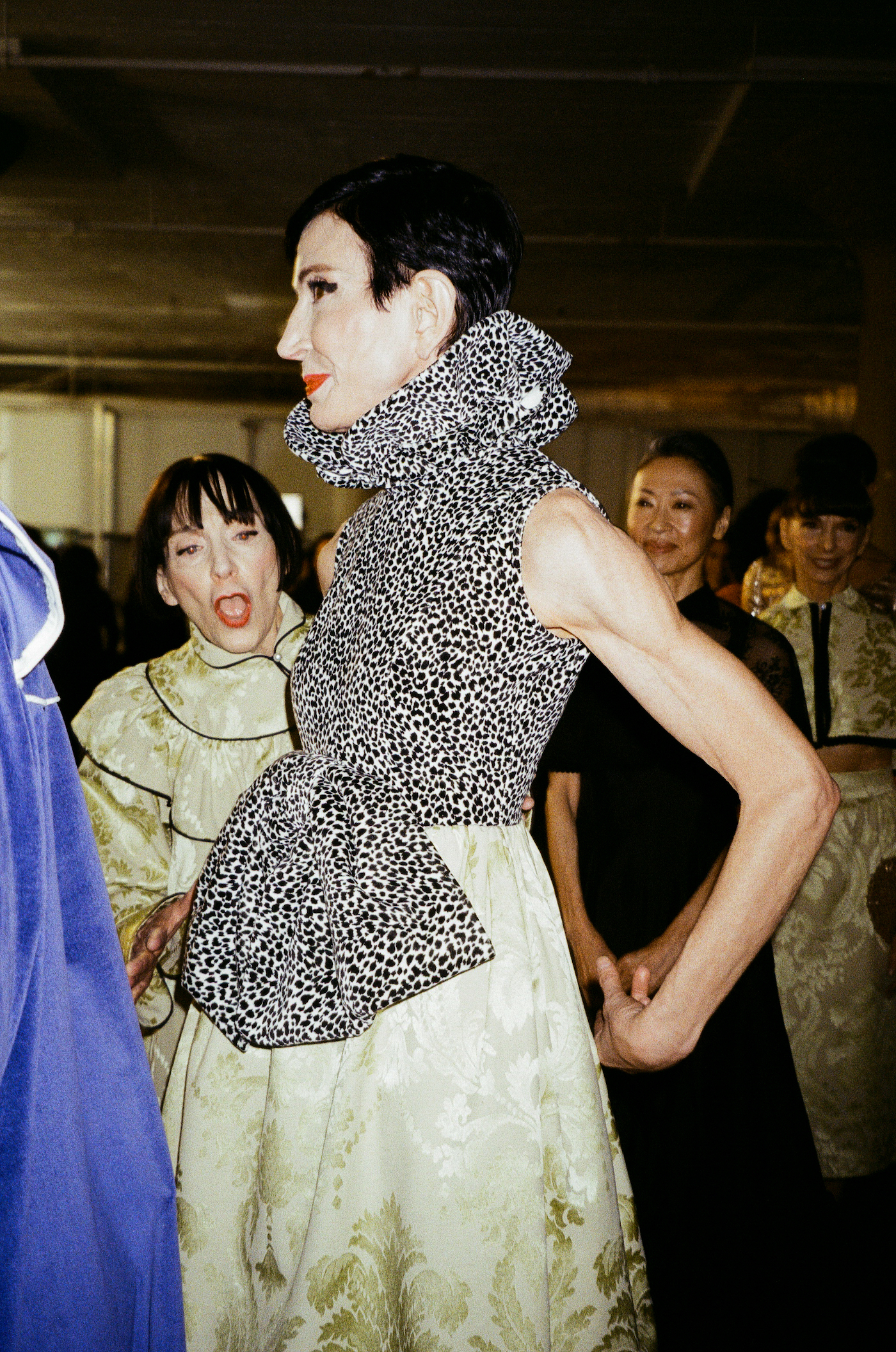


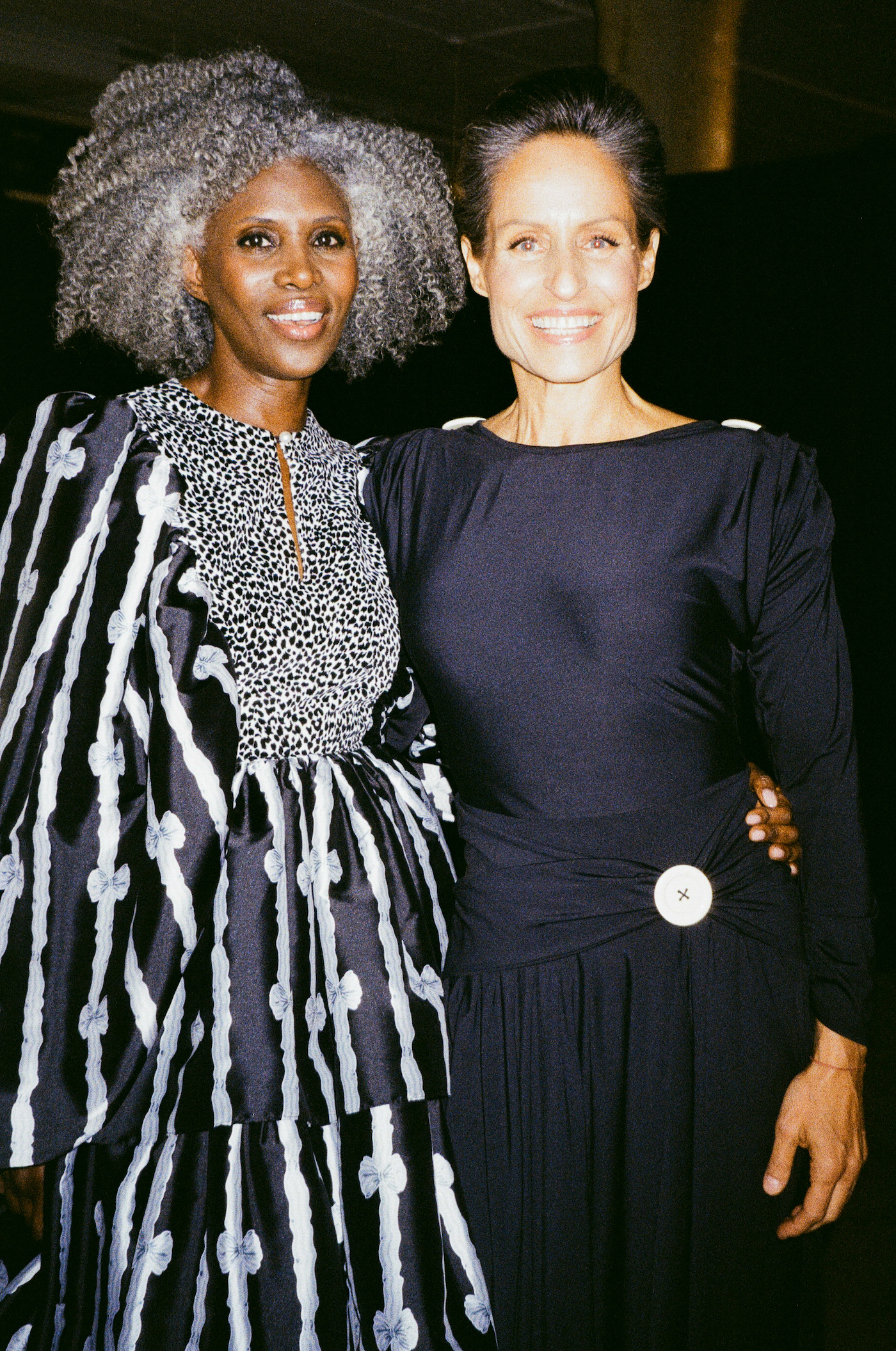

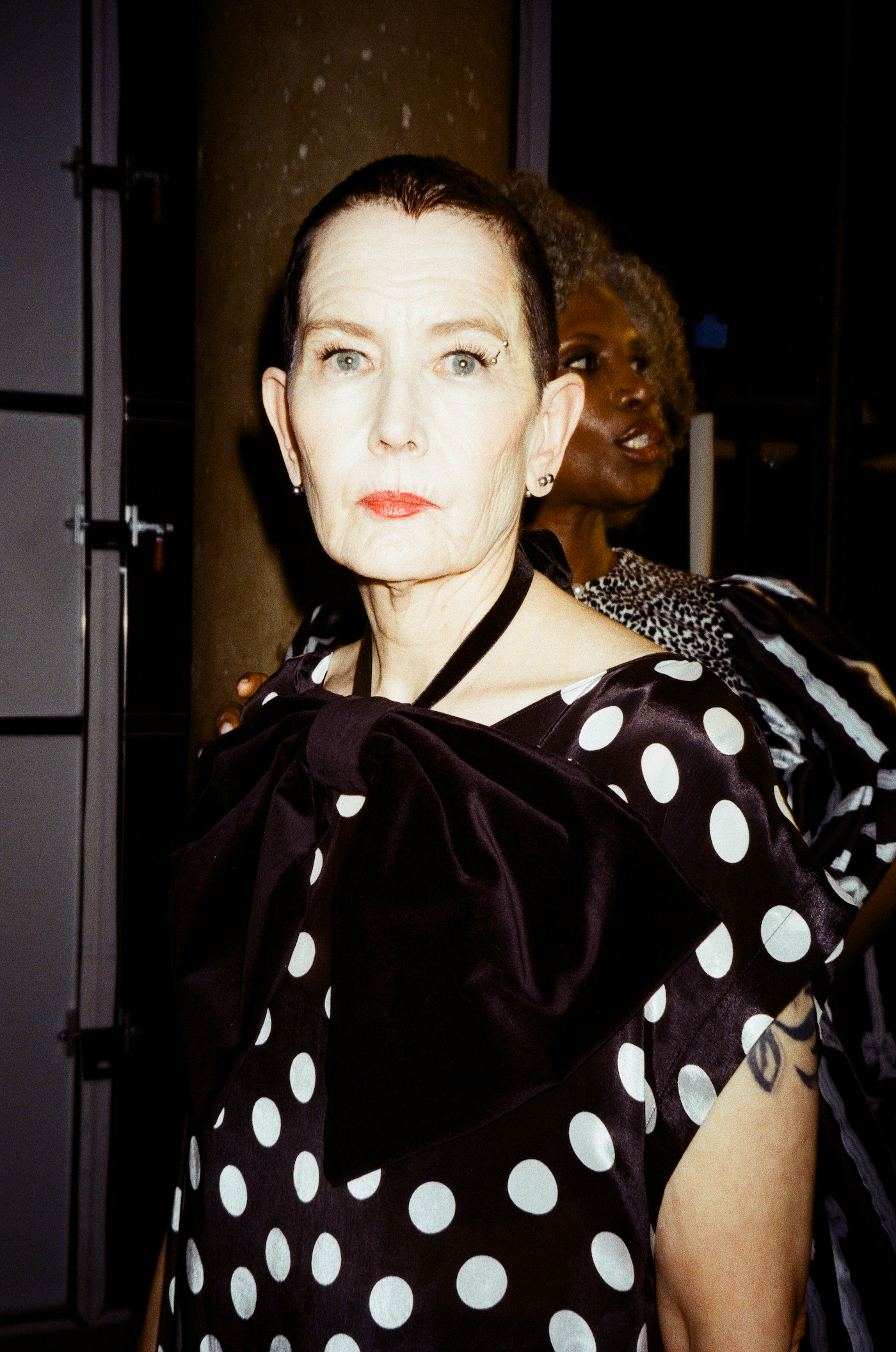
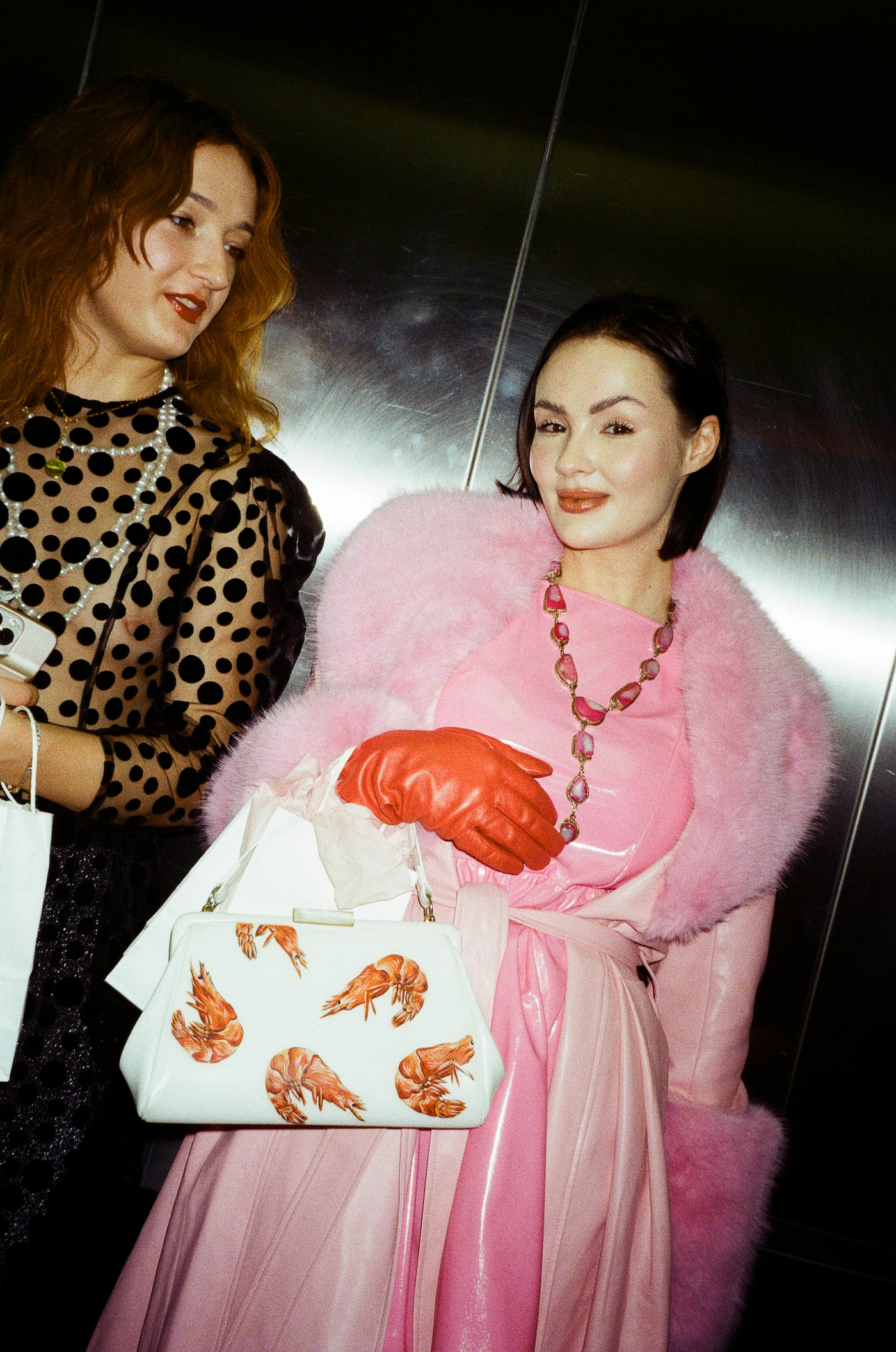
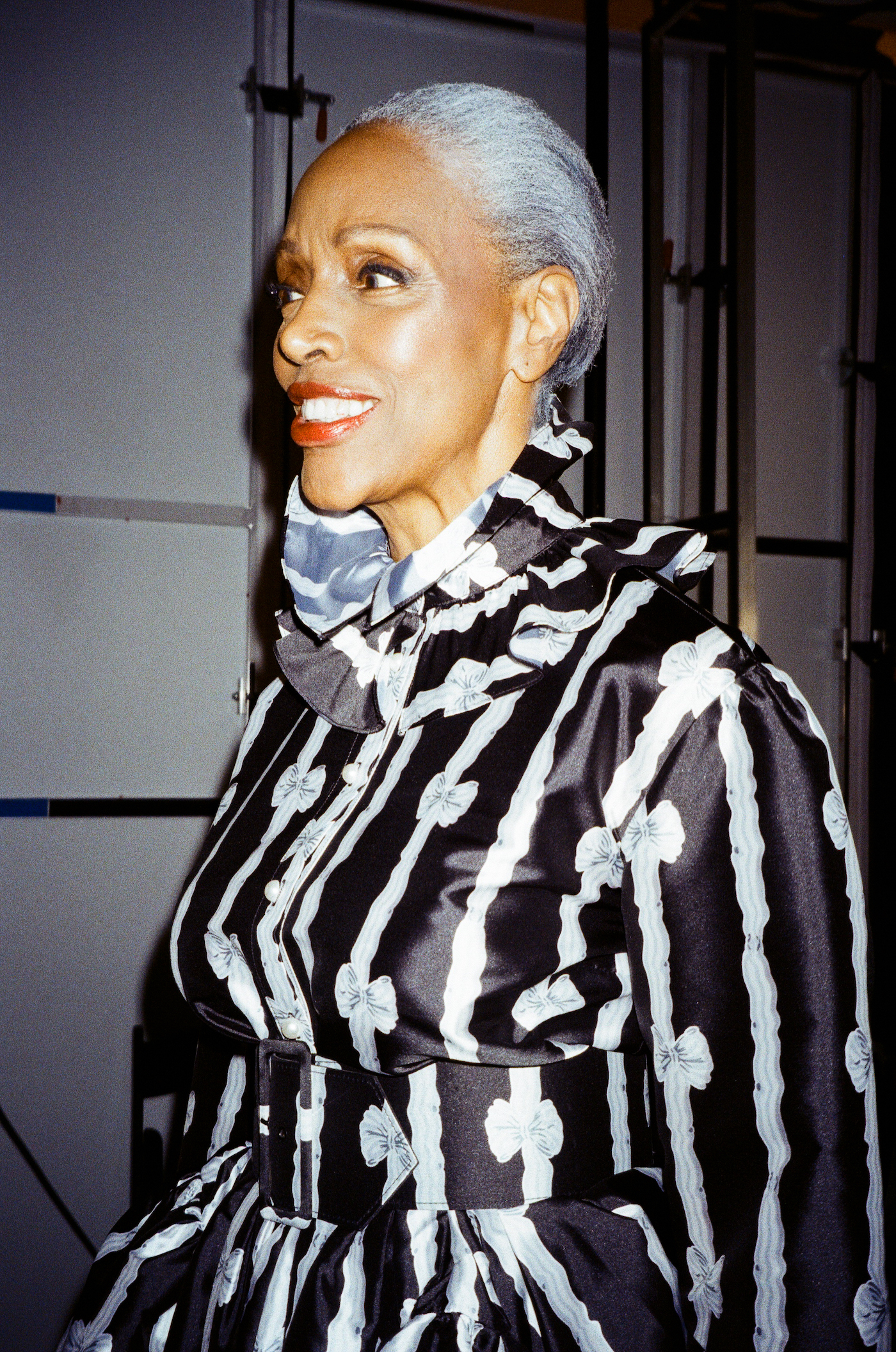
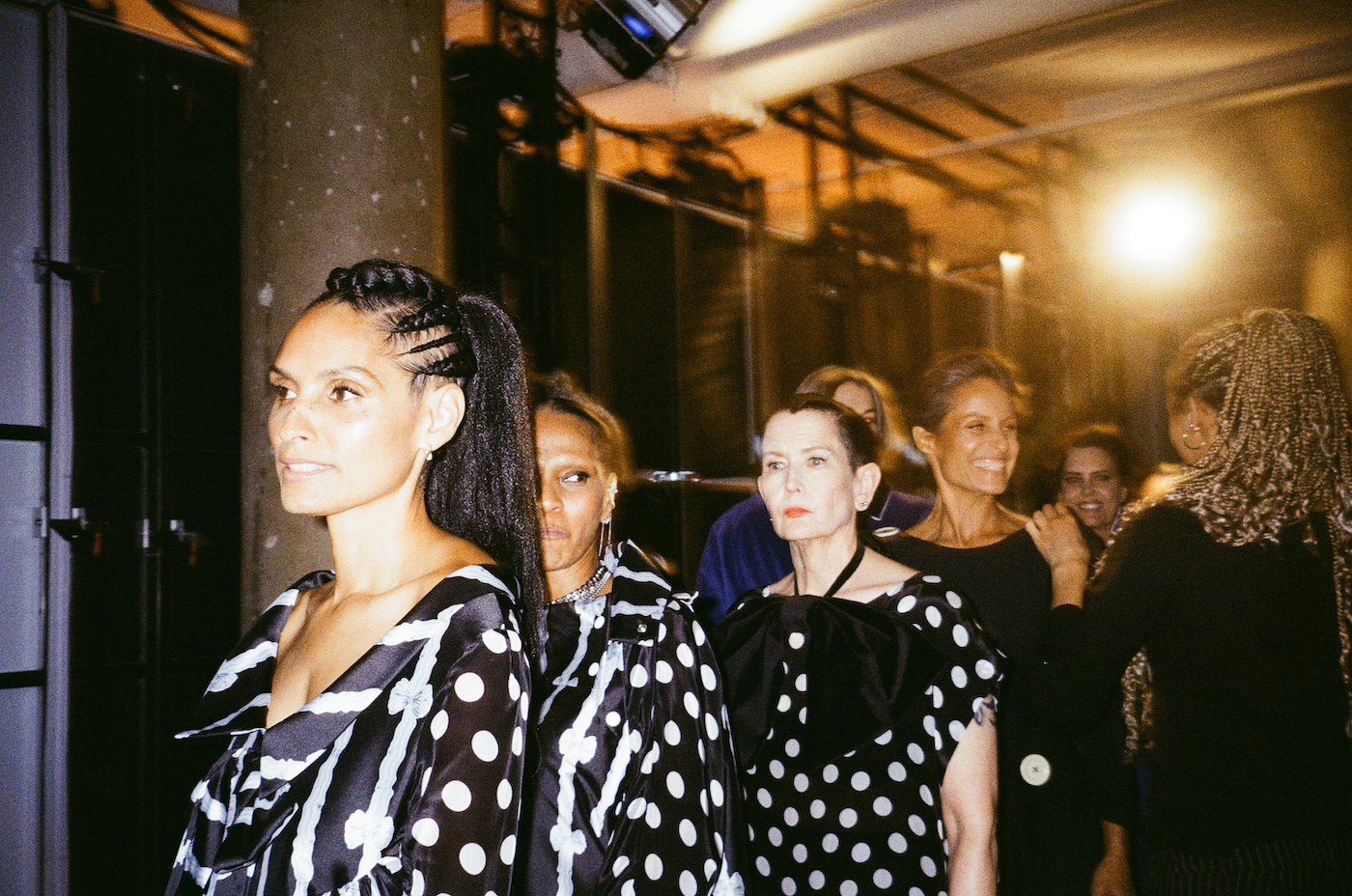
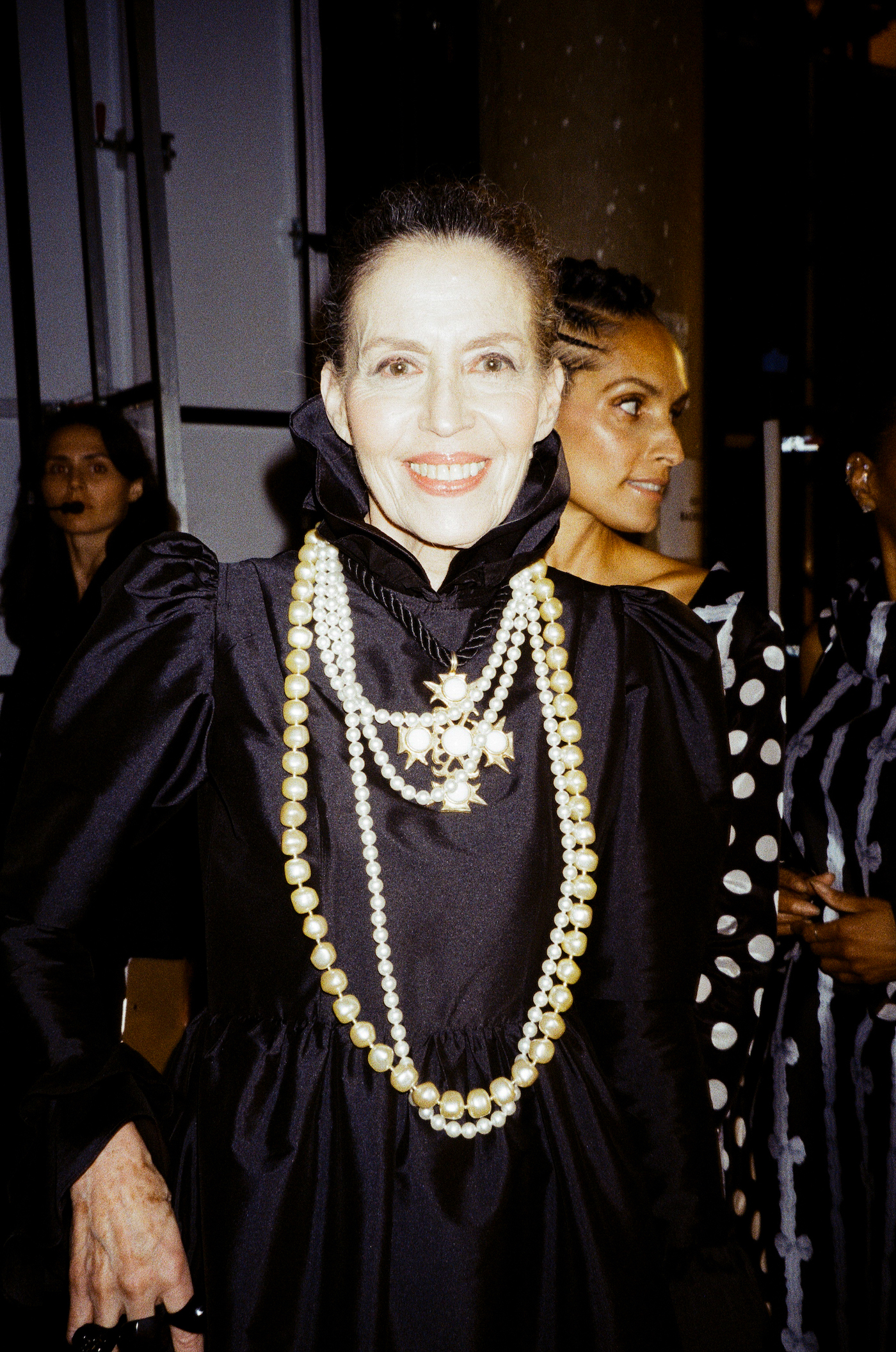
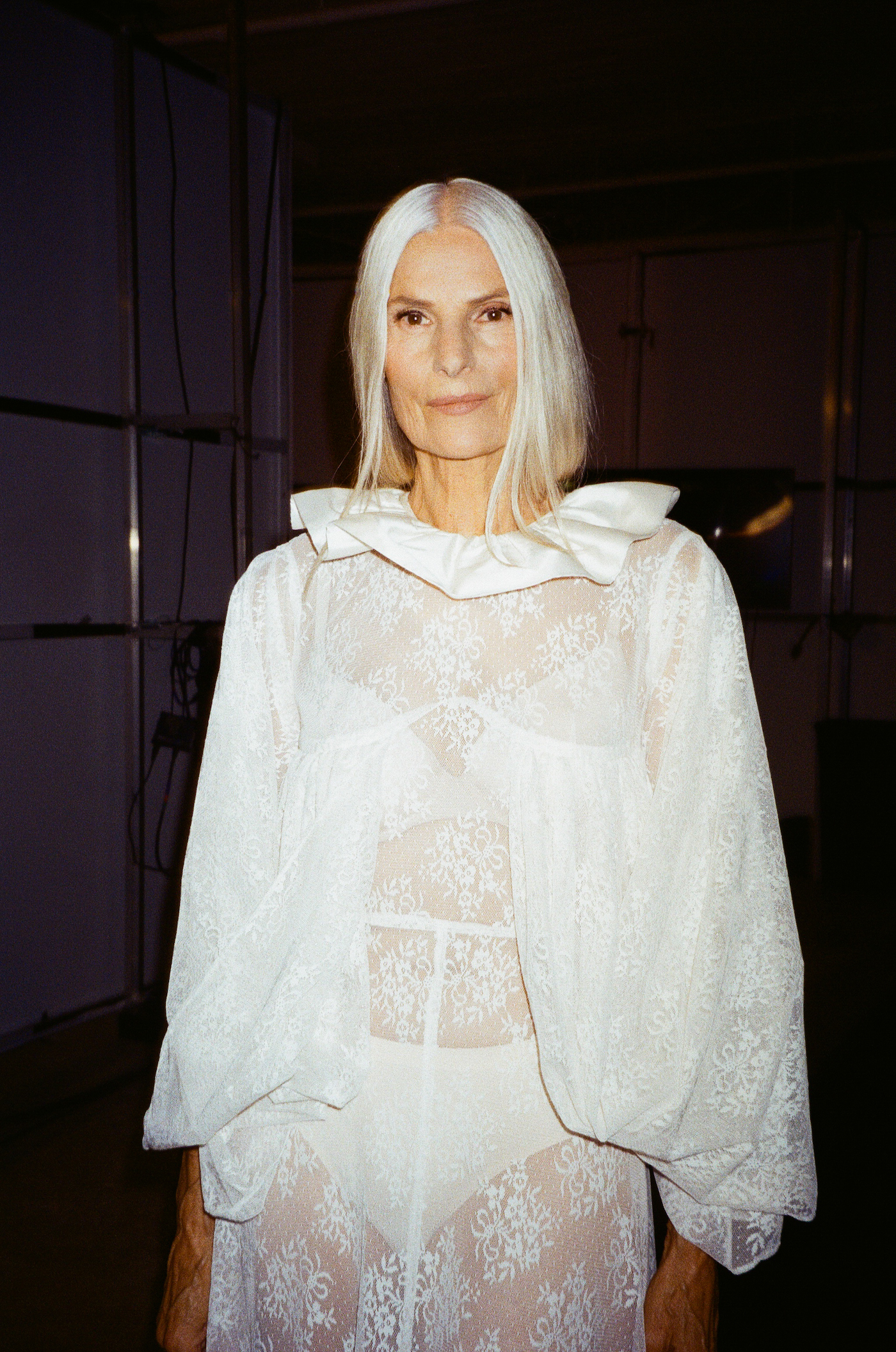


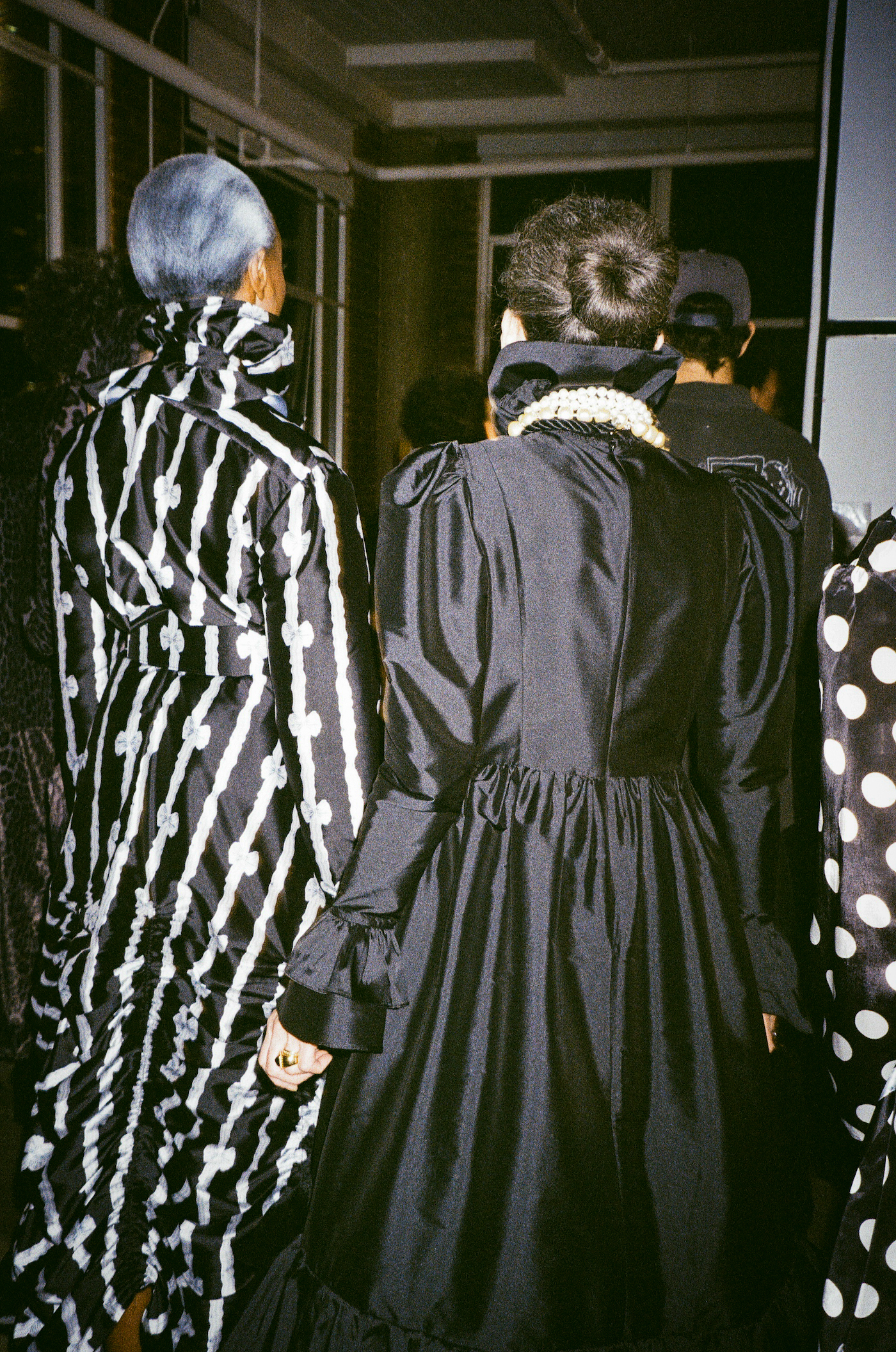
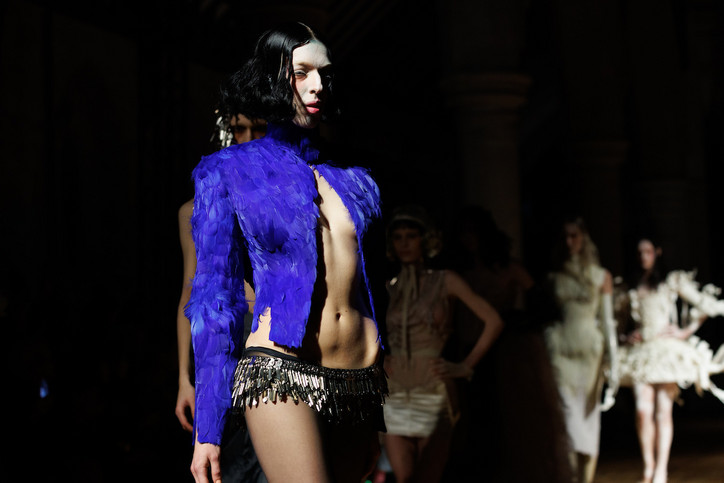
We skulked to the rear entrance of the venue to access the backstage a couple of hours ahead of the show’s start. Navigating the dimly lit corridors of the church hallways, we found ourselves in the changing room. The run of show board detailed 37 intricate looks, each with a respective title, and all complementing the extensive vision of the “Femme Vortex” theme. Models ran across the floor, making sure to finish any last bits of hair and makeup prep before the final tech run-through of the show. As places were called for the rehearsal, the room went dark, and the doors slammed shut. The soundtrack for the show began to play, and the show’s choreographer led the models through their marks, Dilara observing closely. The designer could barely contain her glee as she looked over the months, if not years, of work and energy she and her team had poured into the collection.
After the run-through, the realization that all of the work would be coming to fruition in mere minutes began to set in, and chaotic energy streamed through the backstage. Trying to capture the energy while not disrupting the workflow, we found ourselves in a quiet green room. Inside, one of the models, sex symbol and cultural icon Lana Rhoades, quietly practiced her walk in the mirror. Her bashful demeanor as she rehearsed showed the range of feminine expressions that would be displayed in the show. While some models would be adamantly demanding the space they take up in their walks, others, like Lana, would draw us in with their quiet, shy sensuality.

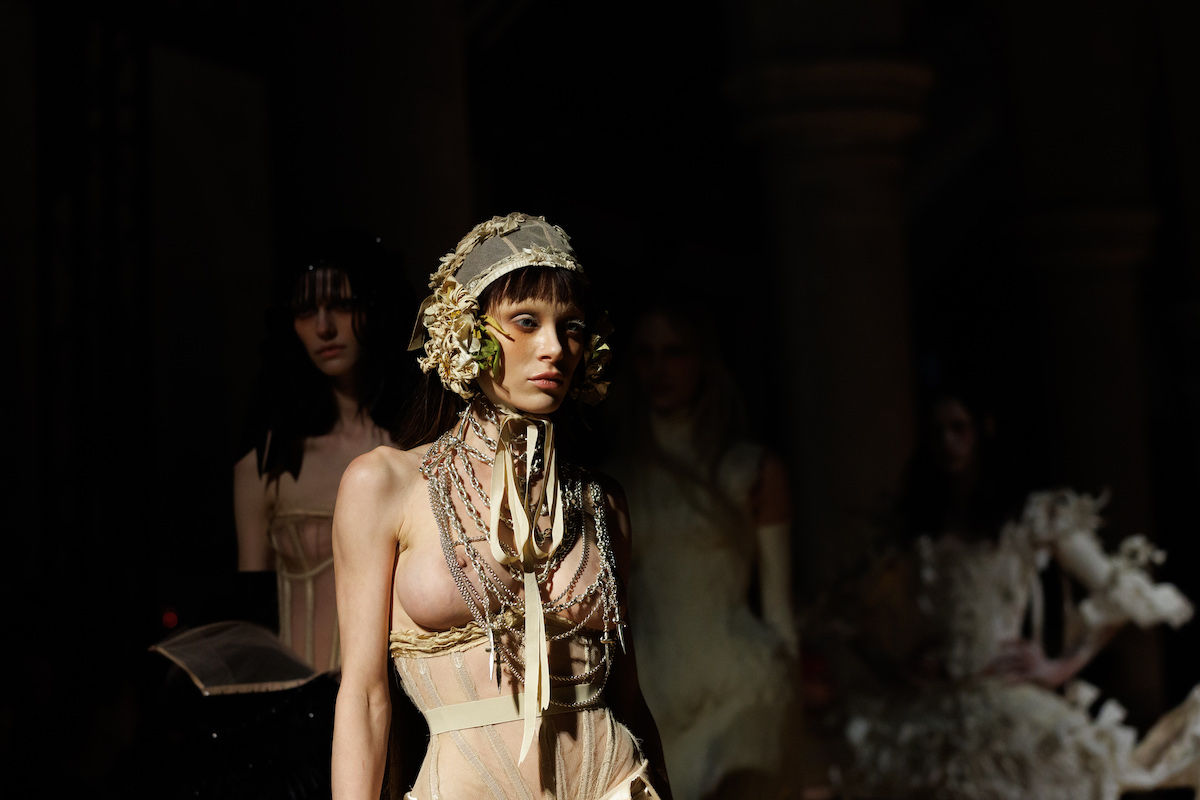
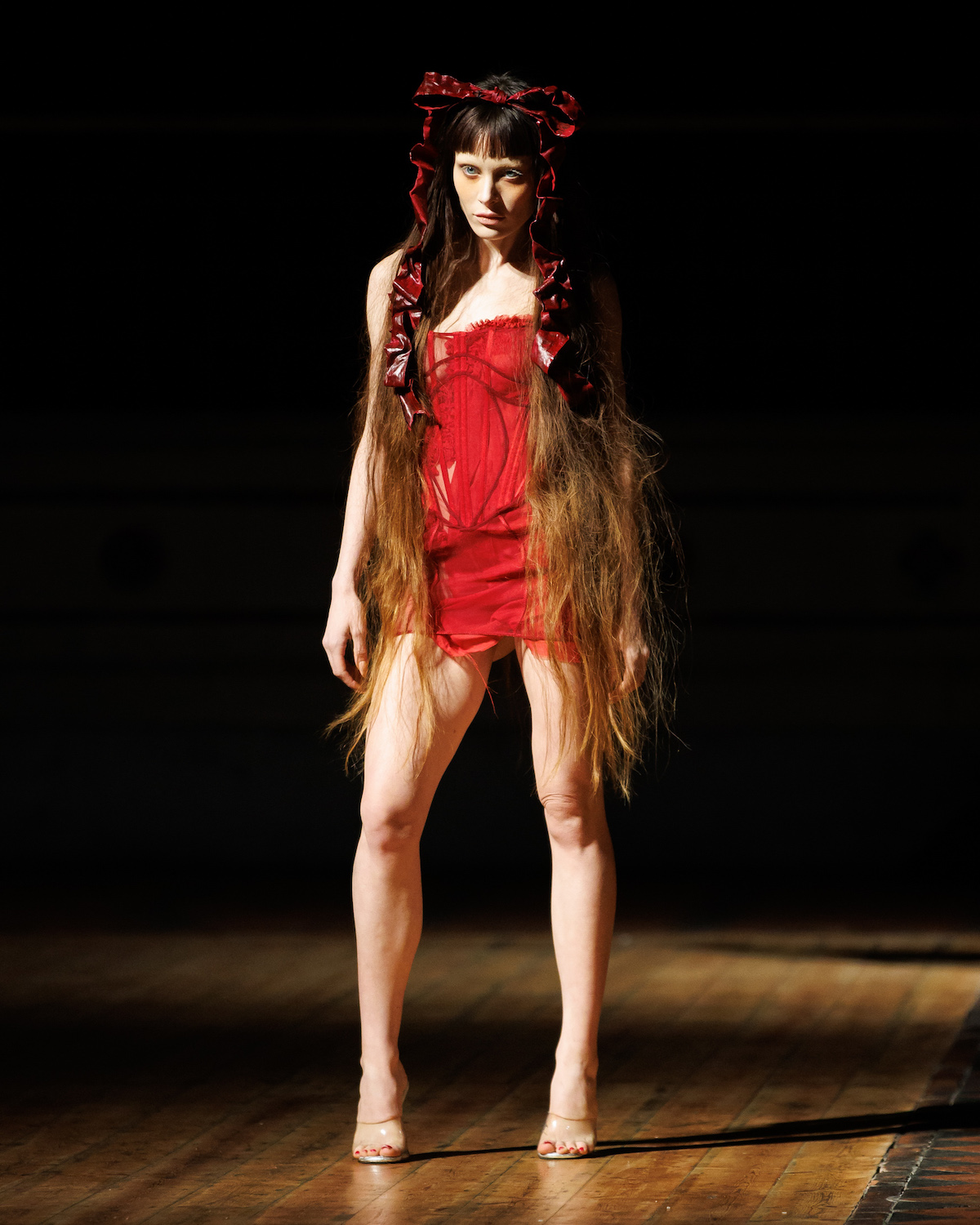
Showtime approached, and the rest of the attendees shuffled into the venue; we made our way back to the front of the house to take our seats. Like déja-vu, the lights dimmed once again, and the show was beginning. The first look, Female Territory, worn by actress-model and friend of the brand Hari Nef, set the tone for the entire collection. She dramatically progressed along the catwalk in a sheer dress, slinking its way out of a traditional pinstripe suit like a snake shedding its skin, collecting prizes on its way up like the men’s watch stuffed into the bosom of the silhouette.
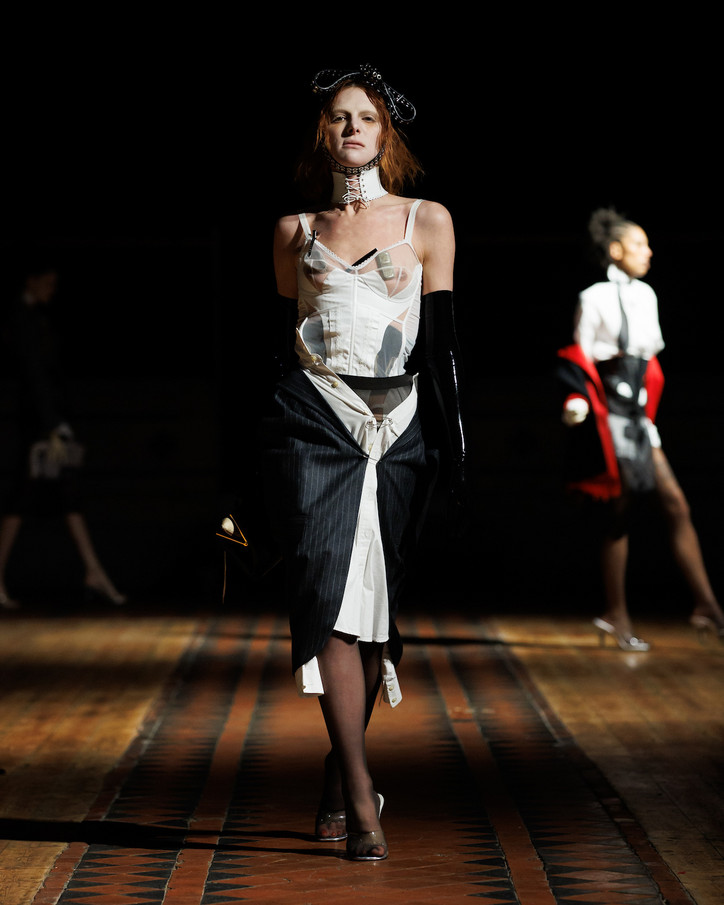
Another look, a vibrant indigo feather jacket paired with a delicate skirt adorned with keys modeled by Dilara’s friend and peer Deniz Tuna, brought to mind the voluminous feathered dresses of McQueen’s Horn of Plenty collection. Such juxtapositions are not uncommon, as Dilara is often compared with greats and fellow Central Saint Martins alums like Alexander McQueen and John Galliano. While such references can certainly be flattering, it is essential to recognize that Dilara is a unique force of her own. She is a woman designing for women. Her relationship with her innate femininity is effortlessly and distinctively translated into her work. In her own words, her designs are ‘a manifesto for a world order born of an unrelenting vortex of femme energy.’
In her pursuit of fashion expressing the ‘divine feminine,’ though, Dilara uncovers something else. Her designs and creative direction bring to light an intensely sinister dimension of femininity. Seduction, sensuality, and domination become tools of empowerment. Why play by their rules when we can make our own becomes the mentality. The final two looks of the collection might represent the consequences of these approaches. In the lifespan of the Femme Vortex, the penultimate look, ‘Question of Time,’ is one of anglicism. White ribbons and lace illustrate an untouched innocence — a naïvety afforded by ignorance and obliviousness. The final look of the collection, ‘Waking the Witch,’ is of a feminine soul weathered by measures it was forced to take to ensure its power and survival. Despite its ultimate beauty, the all-black dress with molten effects and dark feathered details oozes malevolence.
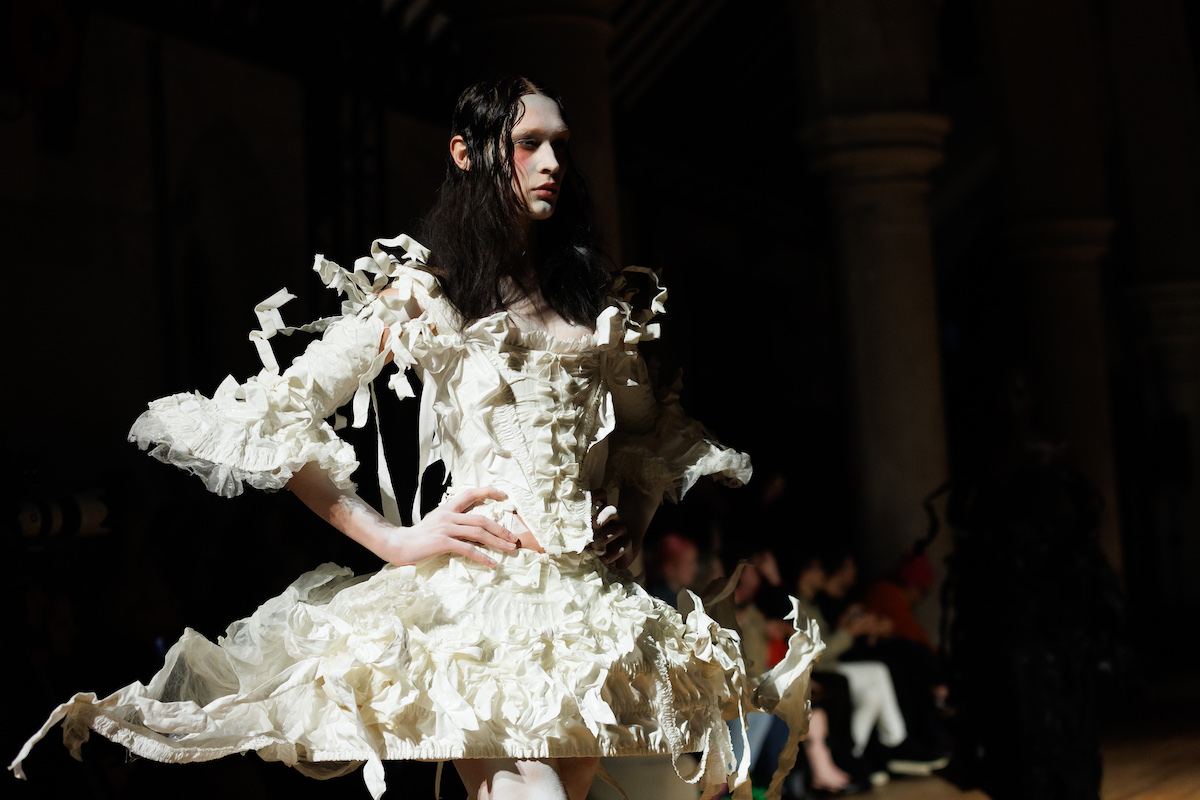
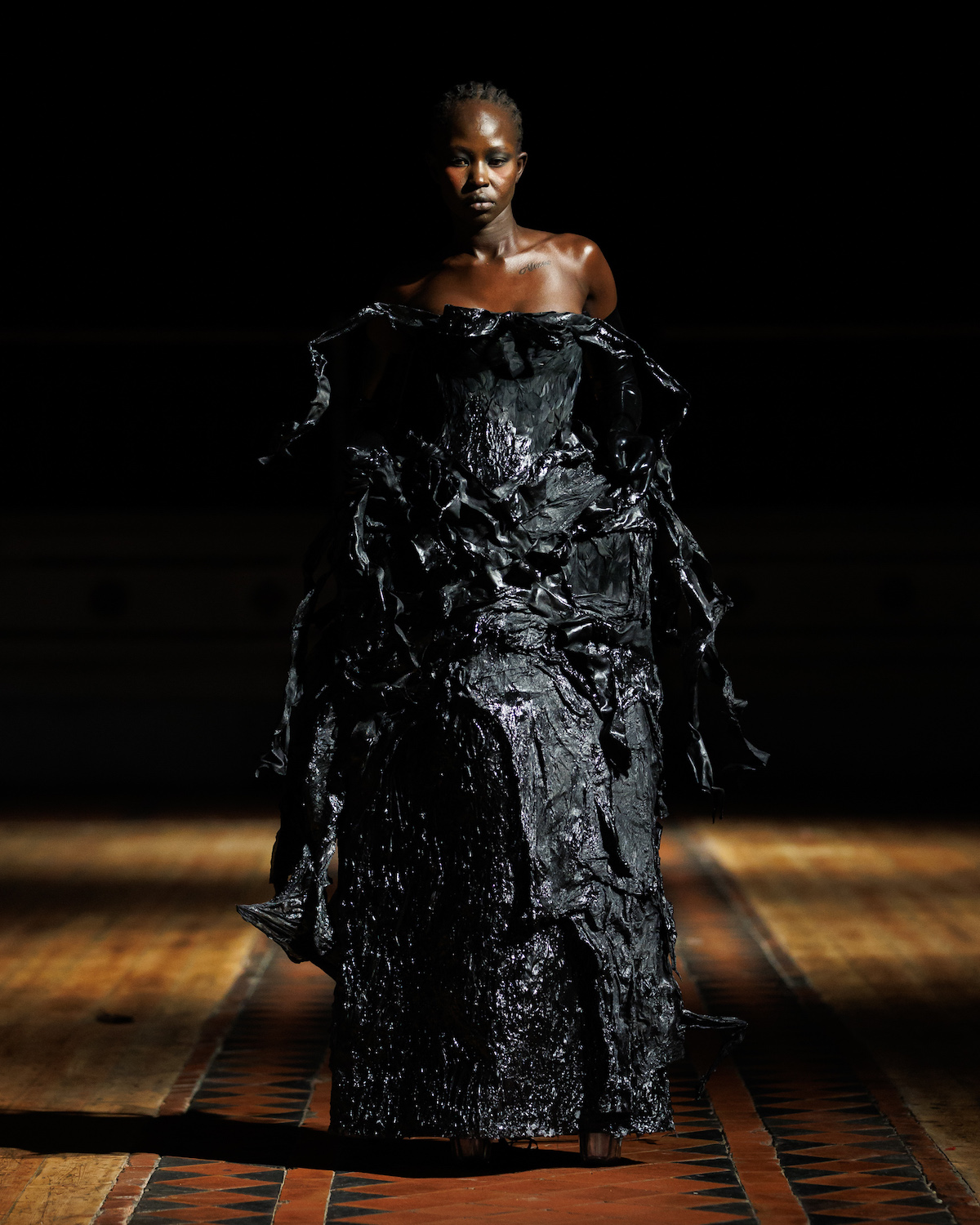
The ability to turn such sinister sensations into awe-inspiring creations of feminine beauty is part of what makes Dilara a designer of a generation. From concept to execution, she perfects and manages every detail without losing any of the mystical energy that her collections emanate. ‘Femme Vortex’ is a collection that will undoubtedly be revisited as we look back on the early career of one of the most significant designers of our time.